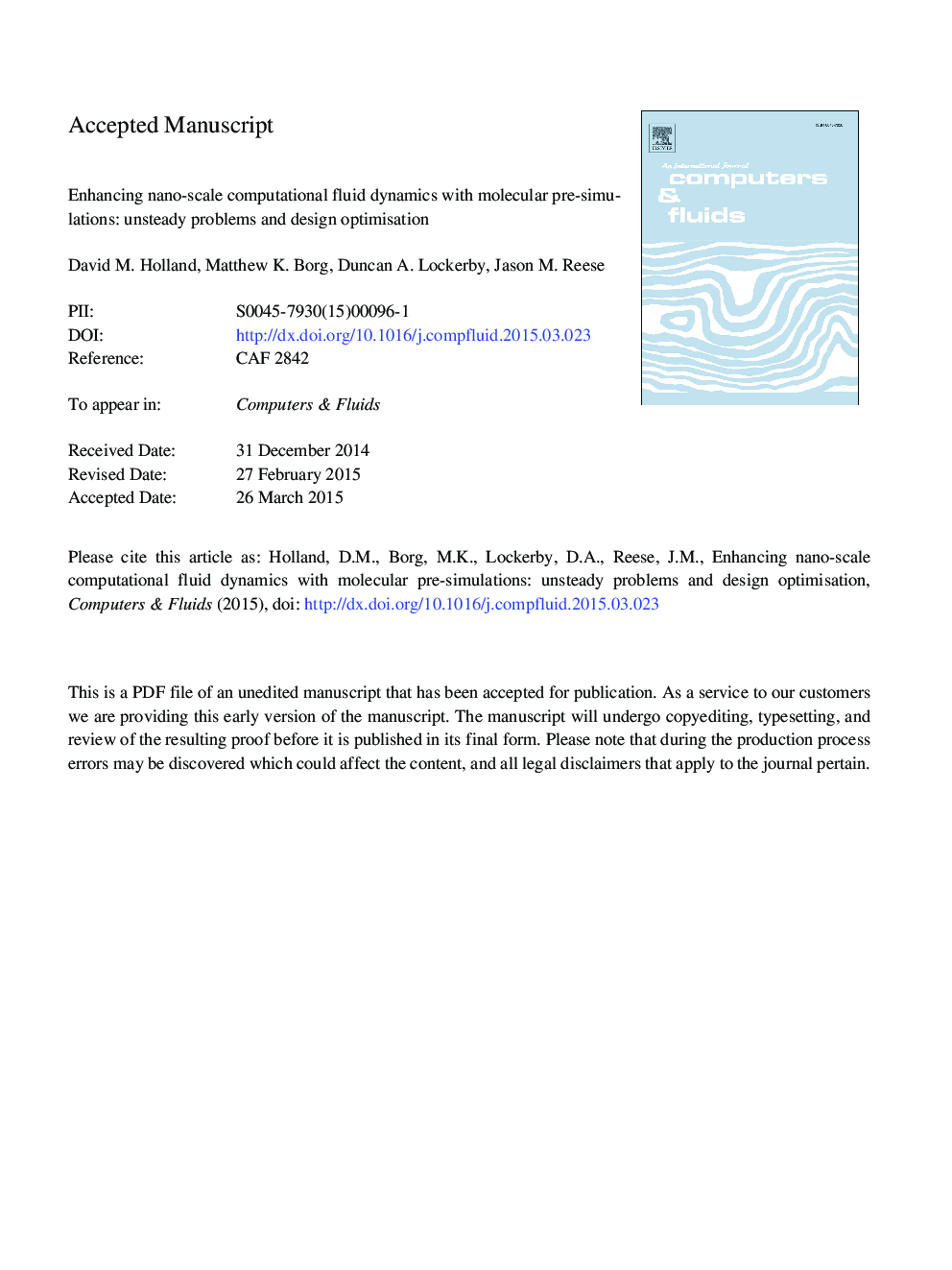| Article ID | Journal | Published Year | Pages | File Type |
|---|---|---|---|---|
| 7156957 | Computers & Fluids | 2015 | 14 Pages |
Abstract
We demonstrate that a computational fluid dynamics (CFD) model enhanced with molecular-level information can accurately predict unsteady nano-scale flows in non-trivial geometries, while being efficient enough to be used for design optimisation. We first consider a converging-diverging nano-scale channel driven by a time-varying body force. The time-dependent mass flow rate predicted by our enhanced CFD agrees well with a full molecular dynamics (MD) simulation of the same configuration, and is achieved at a fraction of the computational cost. Conventional CFD predictions of the same case are wholly inadequate. We then demonstrate the application of enhanced CFD as a design optimisation tool on a bifurcating two-dimensional channel, with the target of maximising mass flow rate for a fixed total volume and applied pressure. At macro scales the optimised geometry agrees well with Murray's Law for optimal branching of vascular networks; however, at nanoscales, the optimum result deviates from Murray's Law, and a corrected equation is presented.
Keywords
Related Topics
Physical Sciences and Engineering
Engineering
Computational Mechanics
Authors
David M. Holland, Matthew K. Borg, Duncan A. Lockerby, Jason M. Reese,
